Although the focus of this article is on OLED TVs, OLEDs have already been widely used outside the TV field. Apple's use of OLED screens on the iPhone 8 has now become an open secret. As the most promising next-generation TV display technology, it can be seen from CES 2017 that the popularity of OLED TVs is accelerating. In particular, Sony has released the OLED TV A1E for the consumer-grade market, which further strengthens the OLED camp. It is time to learn about OLEDs. TV.
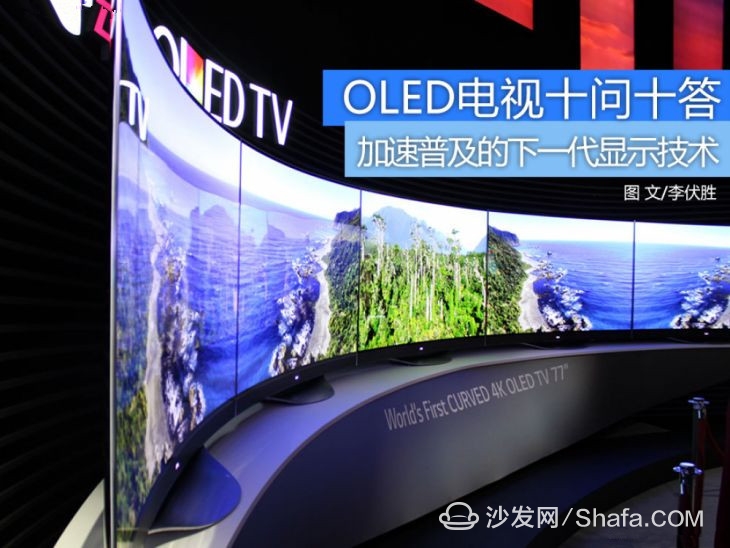
1. What is OLED?
OLED is the abbreviation of Organic Light-Emitting Diode, translated as an organic light-emitting diode. This material was discovered accidentally by Professor Deng Qingyun of Chinese descent in 1979. He suddenly remembered that something was forgotten in the laboratory on his way home. So I went back and discovered that there was a bright light in the dark. It turned out to be an organic battery for experimentation. This led to an in-depth study of OLEDs.
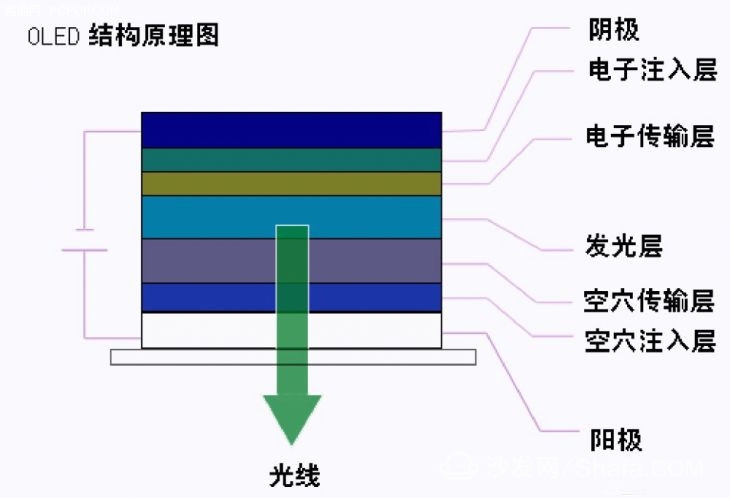
OLED structure schematic (images from the network)
OLED's structure and light emitting principle are too complicated, and it does not take up space to introduce it. It only needs to know that OLED display technology is totally different from traditional LCD display mode. It does not need backlight, uses very thin organic material coating and glass substrate. When light passes through, these organic materials emit light.
2. What is the difference between OLED TV and LCD TV?
At present, LCD TVs in the market occupy an absolute market share, attention is not LED, LED refers to only the backlight, the screen body material is LCD, so it is called LCD TV. Compared with OLED TVs, whether or not the backlight is the most obvious difference between the two.
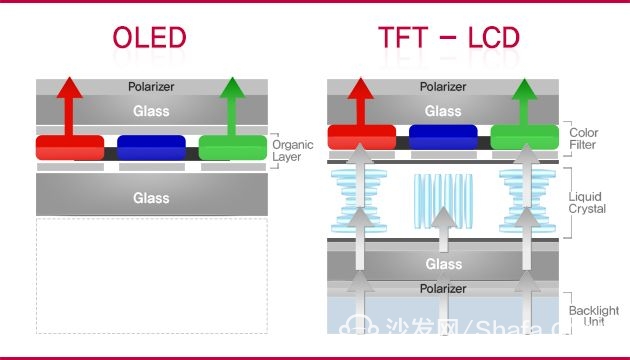
OLED and TFT-LCD structure comparison (images from the network)
As can be seen from the above figure, the TFT-LCD emits light through the Backlight Unit (backlight unit), turns on and off through the liquid crystal control, and then displays different colors through different RGB color filters, and the OLED uses organic light. Material, it has self-luminous properties, so no backlight is needed.
3. What are the main advantages of OLED TVs?
Referring to OLEDs, self-luminous, high contrast, fast response, wide viewing angles and other characteristics make it the most optimistic about becoming the next-generation display technology. Although LCD TV display technology is constantly evolving and upgrading, it still cannot completely change the imaging principle. Congenital defects such as light leakage, smearing, etc., and these OLEDs can be perfectly solved.
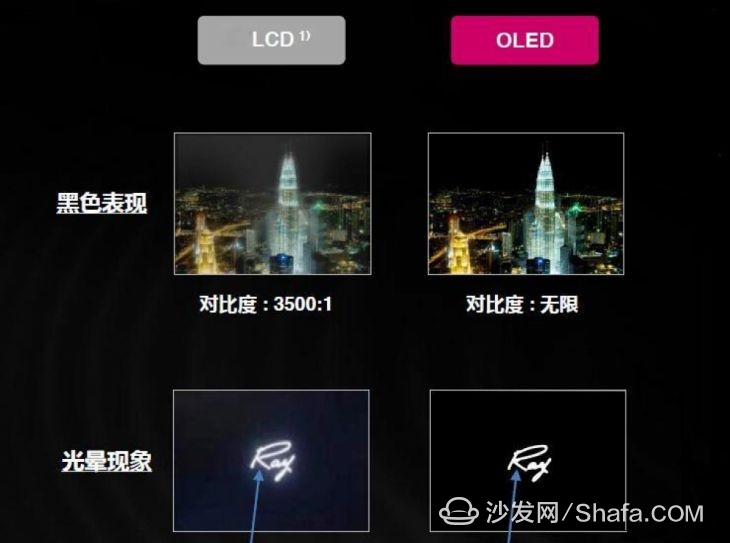
Black market performance OLED has absolute advantages
Because OLEDs use self-illuminants to emit light autonomously, when a black scene is represented, all self-emission pixels are in a state of not emitting light. Therefore, the picture can be completely black, infinite black, and the corresponding LCD TV will have black sinking. The situation, and LCD TVs can not completely block the light of the backlight, so the inevitable light leakage or halo phenomenon, which is particularly evident on cheap LCD TVs.
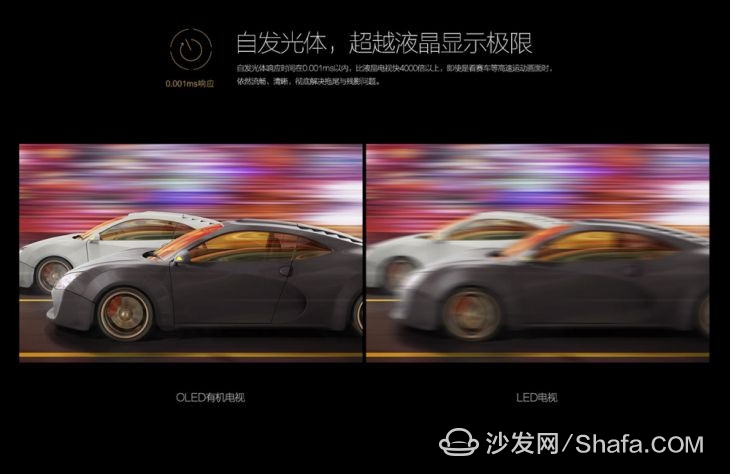
The faster the response speed, the better it can avoid ghosting and smearing.
No matter what kind of means or technology LCD LCD screen through can not fundamentally eliminate the phenomenon of residual image, which is related to the working mode of the LCD screen, liquid crystal molecular deflection response destined to take time, residual image is inevitable. OLED's response speed is far more than that of LCD, and it can be very smooth and clear when showing motion pictures. This is another technical advantage that OLED can't be overtaken by LCD TV.

OLED has an ultra-wide viewing angle
IPS hard screens in the LCD field are famous for their wide viewing angles, but they are also inferior to OLED TVs. The active light emission characteristics make the viewing angle of OLED panels close to perfect, and even the effects obtained from some extreme angles are basically the same. Because of this, the emperor's place in the living room lost its meaning.
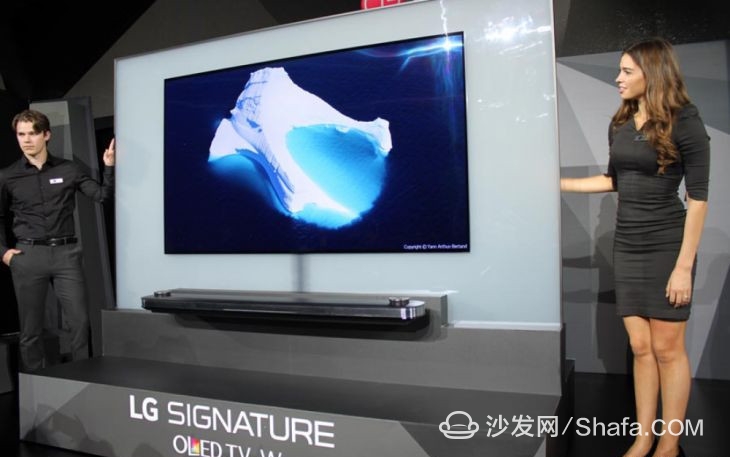
LG SIGNATURE W7 affixed to the wall
Since no backlight is required, OLED TVs have an absolute advantage over LCDs in thickness. For example, LG's W series OLED TVs launched at CES 2017 are only 2.57mm thick. Due to the split-type design, they can be attached to a wall exactly like a painting. .
In addition, OLED can also realize flexible display, which can display various designs such as double-sided, curled, transparent, folded, wearable, etc. Therefore, in addition to applications in the television field, some smart devices including mobile phones have used OLED screens. , has a wide range of application scenarios in the Internet of Things era.
4. What are the shortcomings of OLED TVs?
Said the above advantages, of course, can not avoid the deficiencies of OLED, OLED most criticized the low yield, residual image and life problems, but as the process progresses, these defects have been improved.
According to LGD President Lu Xiangde, the product yield of LGD increased by 40% in 2016, and the yield rate for November has reached 85%, which is already almost the same as the LCD panel yield. In fact, it took a full 10 years for liquid crystal technology to reach 80% yield, but OLED technology only took 2 years to lay the foundation for its accelerated adoption.
The issue of OLED panel “ghost image†mentioned by the skeptics was also solved by improving the image quality improvement algorithm and improving the component characteristics. It is said that 10,000 hours can be guaranteed without ghost images.
As for the service life, with the continuous maturation of OLED technology, the lifetime of OLED products currently manufactured by LGD can be guaranteed to be 50,000 hours or more. This means that if you watch 8 hours a day, you can use it for 17 years, far more than a TV. The normal use cycle.
There are no shortcomings? No, OLED TVs are still too expensive.
5, OLED, QLED, ULED is a thing?
Although there is only one letter difference, OLEDs, QLEDs, and ULEDs may not be the same thing at all and they cannot be confused.

QLED imaging principle (picture from the network)
QLED is a liquid crystal television using a quantum dot technology. It is a very tiny semiconductor nanocrystal. When a quantum dot in a quantum dot film is stimulated by a photoelectron, colored light is emitted, and a different color is emitted according to the size of the quantum dot, and the color can be improved. TV's color gamut and color accuracy. However, at present, quantum dots are mainly used in the backlight of LCD TVs. It is obviously not enough to increase the color gamut. Quantum dot TVs using electroluminescence have much to watch.
ULED is the image quality processing technology of Hisense TV. It uses Local Dimming backlight partitions and Hi-view Pro quality engine chips to provide brightness, contrast, picture layering, dark field details, accurate color reproduction, and smooth image quality. The response speed is significantly higher than traditional LCD TVs. From the technical route announced by Hisense at CES 2017, it can be seen that ULED will be combined with quantum dot display technology, and Hisense will enter the field of quantum dot display and QLED in the future.
Smart TV/box information can focus on smart TV information network sofa butler (http://), China's influential TV box and smart TV website, providing information, communication, TV boxes, smart TVs, smart TV software, etc. Answering questions.
China Changing Cabinet,Battery Cabinet,Battery Changer Cabinet,Battery Switch Cabinet, we offered that you can trust. Welcome to do business with us.
Changing Cabinet,Battery Cabinet,Battery Changer Cabinet,Battery Switch Cabinet
Shenzhen Hongjiali New Energy Co., Ltd. , https://www.hjlcharger.com